
[All images by BUILD LLC]
Recently, BUILD LLC completed the modestly sized Juniper Flats, a multi-family building of 12-apartments on a small 5,000-sf parcel in Seattle’s Ballard neighborhood. The project tests out several architectural strategies for a changing and challenging rental market, and we’re keeping close tabs on the performance of this building, as it will significantly inform the design of future projects. Smaller multi-family-zoned lots require clever design strategies to produce a building and a pro forma that work together. Site characteristics that initially appear as disadvantages to a potential development need to be reappropriated in order to create a functional building. Sometimes, under the right design direction, these disadvantages can even become attributes.
The architecture and development team pushed for a precedent-setting efficient design, and the final product achieves a 91.4% efficiency factor of the total building area (for reference, most multi-family projects achieve around 84%). In other words, the building’s circulation spaces only account for 8.6% of the gross square feet, including stairs, lobbies, corridors, and exits. It’s a remarkably high plan effectiveness, and due to the economic and social factors at play in cities like Seattle, this optimization is also the new necessity.
While high efficiency bolsters a good pro forma, this factor alone does not keep units rented. Smart developers know that long-term, happy tenants are one of the keys to a building’s success, and renters in places like Seattle are savvy. They expect an abundance of natural light, a smart floorplan, and a thoughtful interior palette of materials and fixtures.
Last, but certainly not least, all of these factors need to be carefully integrated into a cohesive, beautiful structure that sets itself apart from its neighbors on the block, while conforming to building and zoning codes. The strategies employed to achieve this level of optimization aren’t always obvious; in fact, when challenges are dealt with harmoniously, it’s difficult to see that they were challenges in the first place. It’s worth taking a deeper dive, and breaking down several drivers of the performance and design of Juniper Flats.

Use the slope to your advantage
The design employs a split-level concept, which separates two main volumes that step with the topography. The east side of the site faces a local arterial street, a designated multi-family zone, and sits higher than the west side, the latter of which is adjacent to lower-density zoning, primarily for single-family homes. The split-level design achieves two desirable outcomes:
- Maximizes Floor Area Ratio (FAR). Stepping the building created an opportunity to keep parking partially below grade, and therefore exempt from floor area calculations for permitting. This allows more buildable area for rentable area, and it reduces permitting fees associated with FAR.
- The building massing and scale step down toward the lower density neighborhood behind. This keeps the building height at a scale more relatable to the adjacent single family residences.
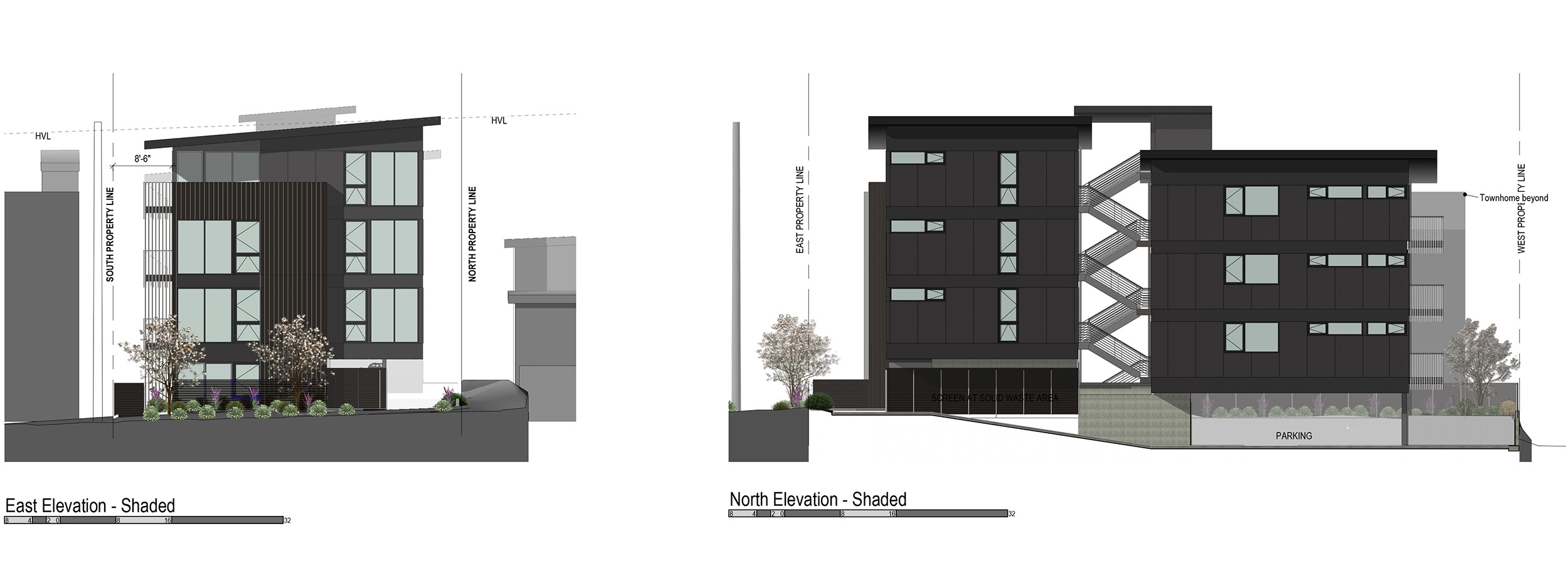
Simplify the circulation
The corridors, stairways, and vestibules at Juniper Flats are everything they need to be and nothing more. This is primarily achieved with the stair landings that serve as unit entries, which removes the need for corridors or breezeways, and allows even more room for interior unit area and rentable space. Excluding the lobby, the exterior stair is the only circulation element for the entire project, and this zig-zag stairway also provides an important design element to the building. It’s worth noting that this strategy is only possible with an exterior stair, as the building code requires interior stairs to be separated by corridors or vestibules.
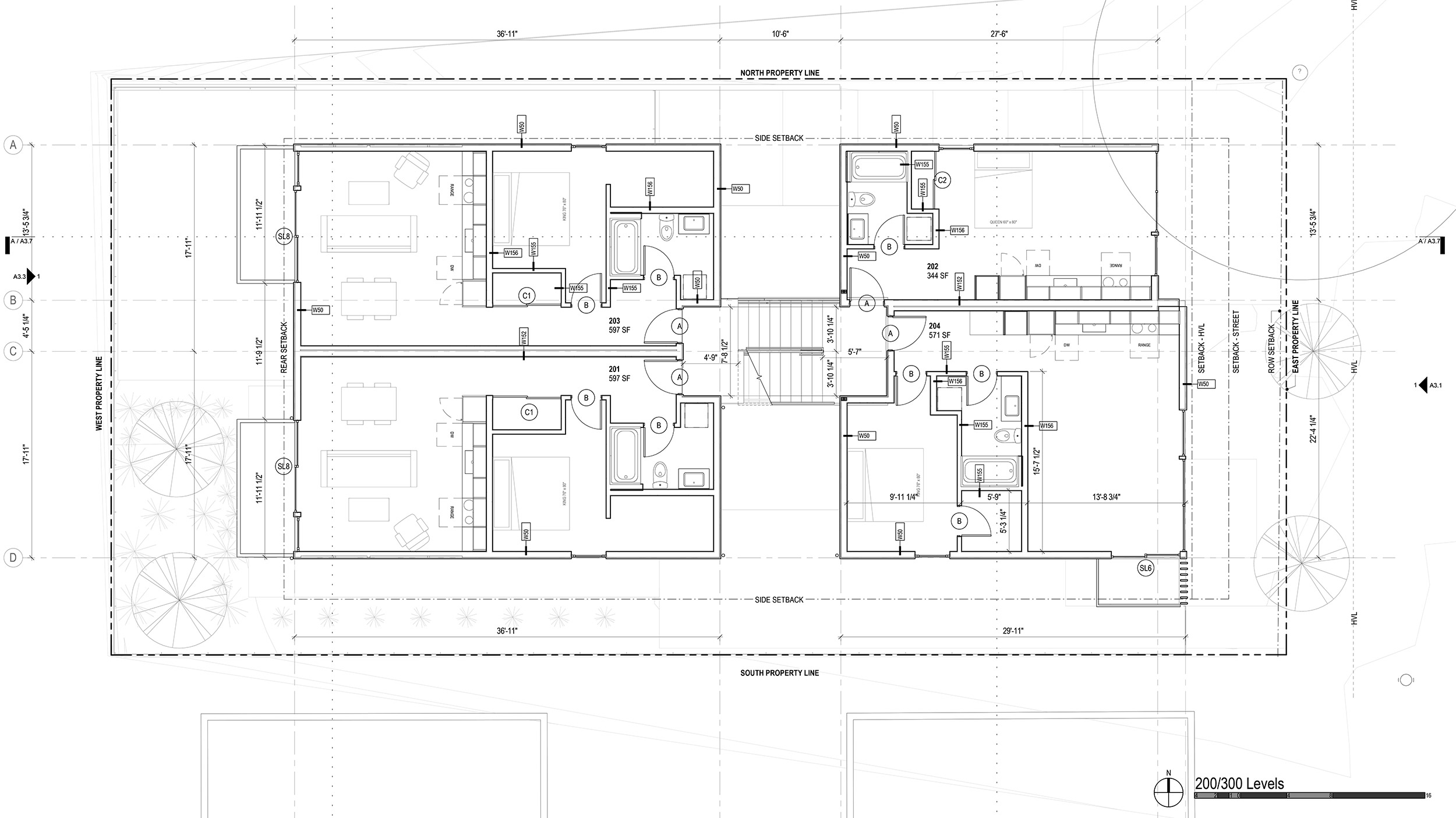
Four units to a floor
This eliminates the need for an elevator, maintains a single stair requirement, and keeps vestibules simple and minimal. Laying out the units in quadrants ensures that each apartment has windows on two sides, which is a game changer in the layout and feel of the flats. Units range from 390-sf studios, to 655-sf one bedrooms.
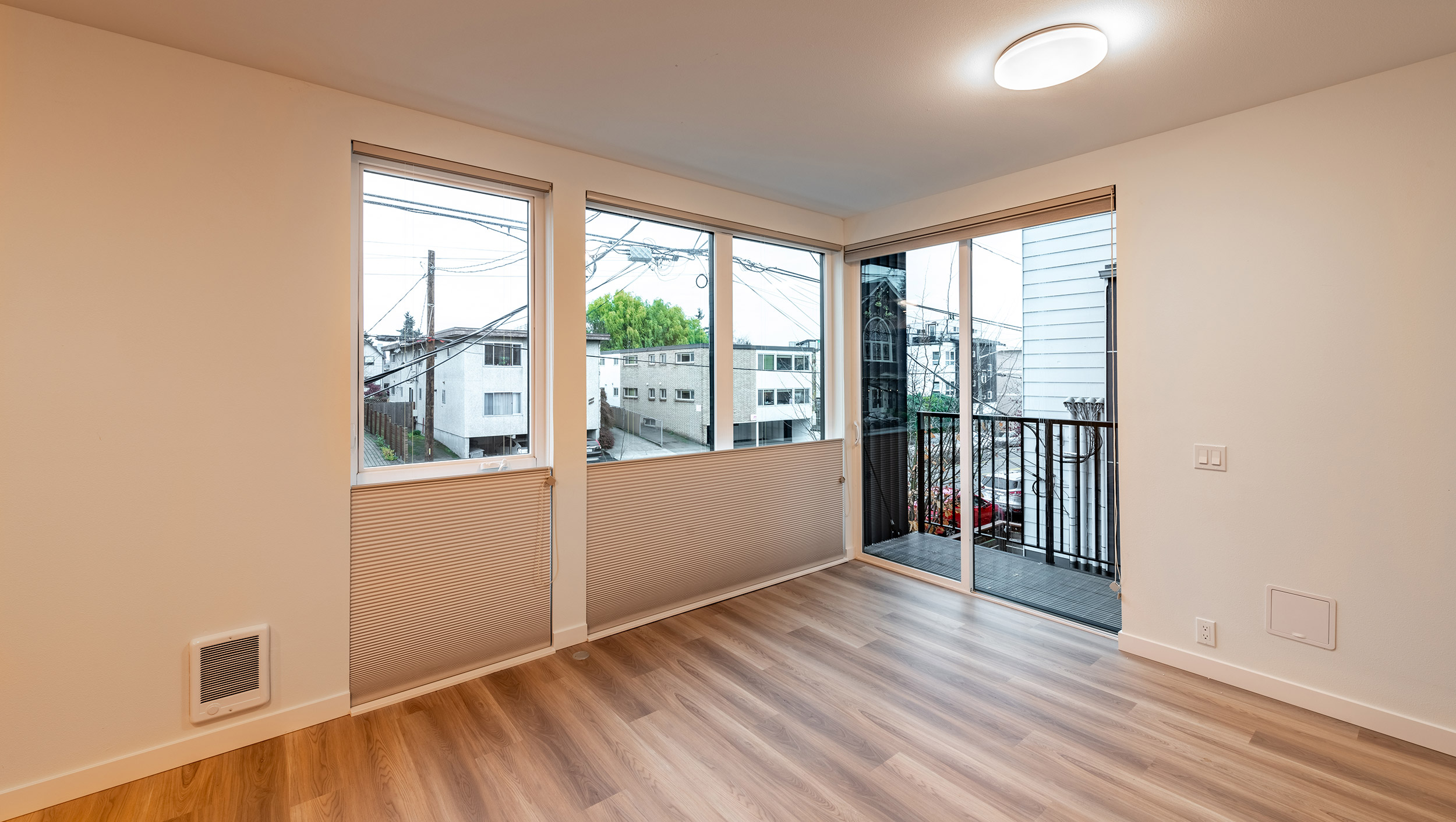
Designate the ground floor for accessibility
This maintains straight-forward circulation to accessible units, and prevents the need for elevators and complicated corridors on the floors above. It also typically allows the accessible units to enjoy a garden style flat with adjacency to a landscape or hardscape.
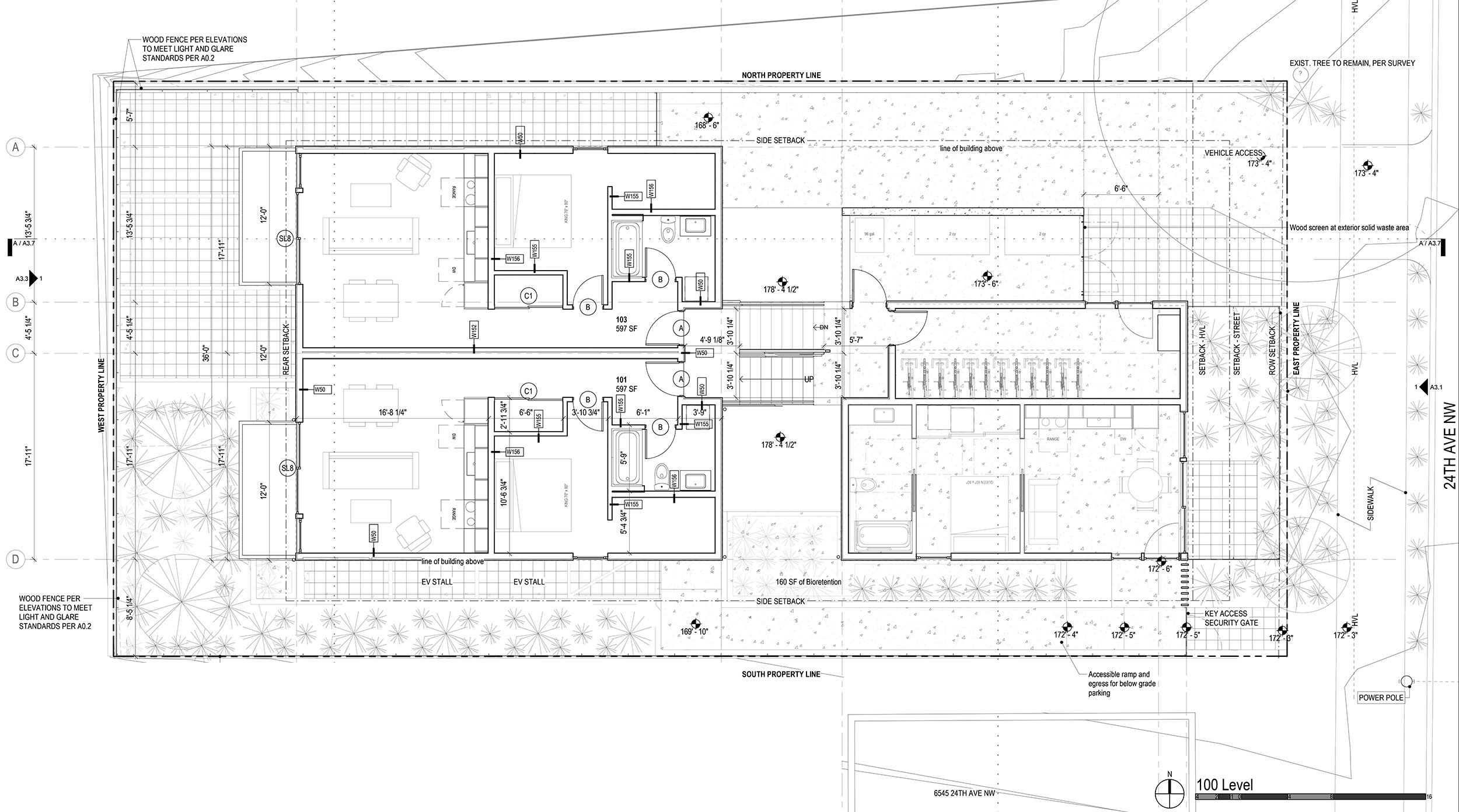
Clerestory windows
These horizontally oriented windows, located higher up in each unit, allow natural light while maintaining privacy
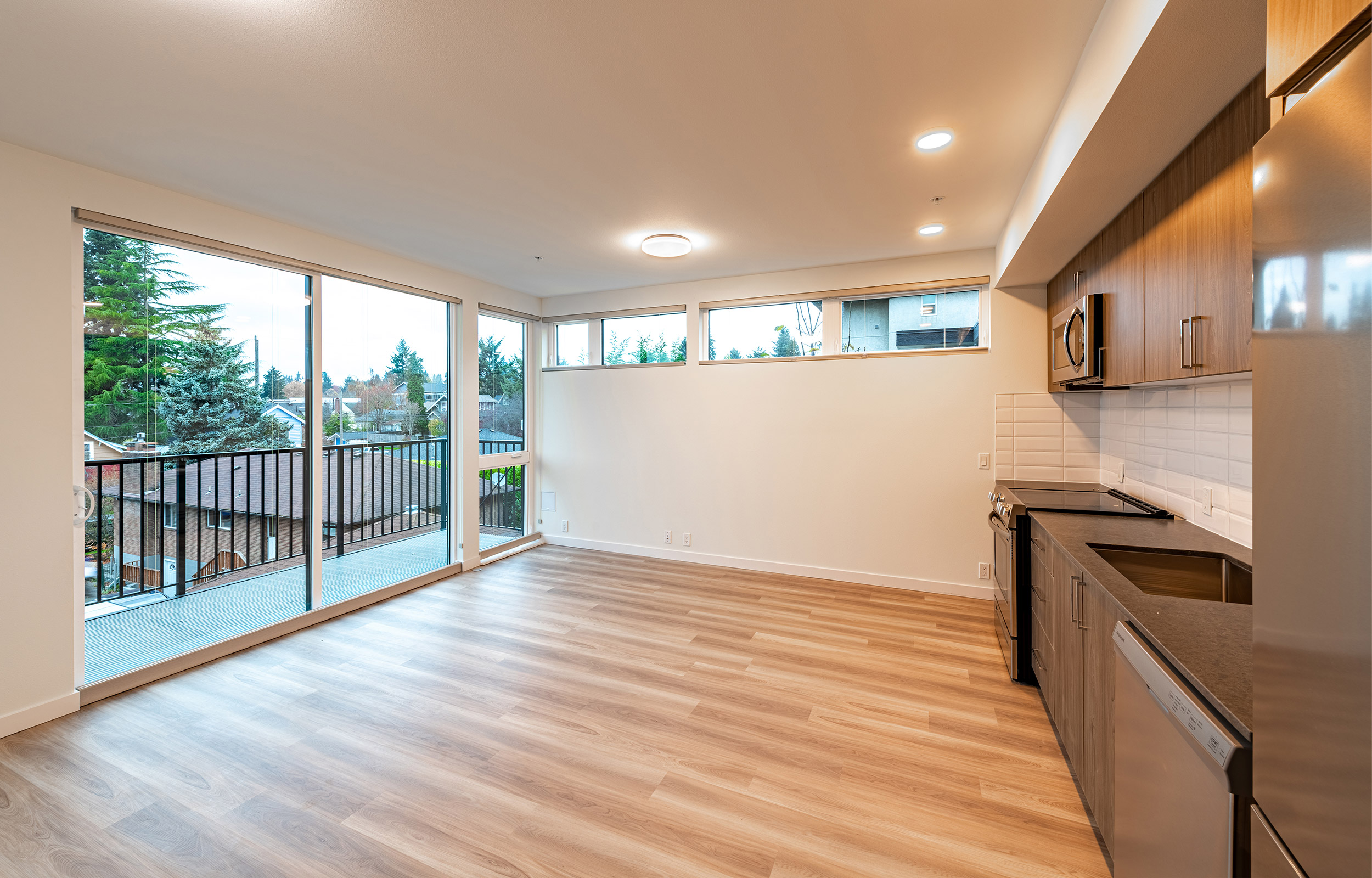
Strategic massing
The building’s massing is shifted toward the north side of the site, allowing for larger south facing planted yards. Additionally, the two volumes are separated by an open air courtyard, or “gasket,” that contains the central exterior stair. The overall layout addresses four primary constraints:
- Setbacks and power lines: the building is required to have front, side, and rear yards, and the street facing façade is further constrained by its proximity to a powerline.
- Design Standards: façade articulation is required with a minimum of three separate façade plane changes and material variations.
- Amenity space: without an elevator, all amenity area is required at the ground level. The courtyard/gasket and southern yards are wider than building or land use codes require in order to accommodate the required amenity.
- Façade length: substantial setbacks (15’ +) are required intermittently for facades wider than 40’ (including side lot lines). Unfortunately, small lots are subject to the same façade length percentages as larger whole block structures, which disproportionally impacts smaller lots, and significantly constrains the buildable area. The gasket design is used to serve the amenity and façade length requirements. The exterior stair is centered within the courtyard, and just fits within the required setbacks.
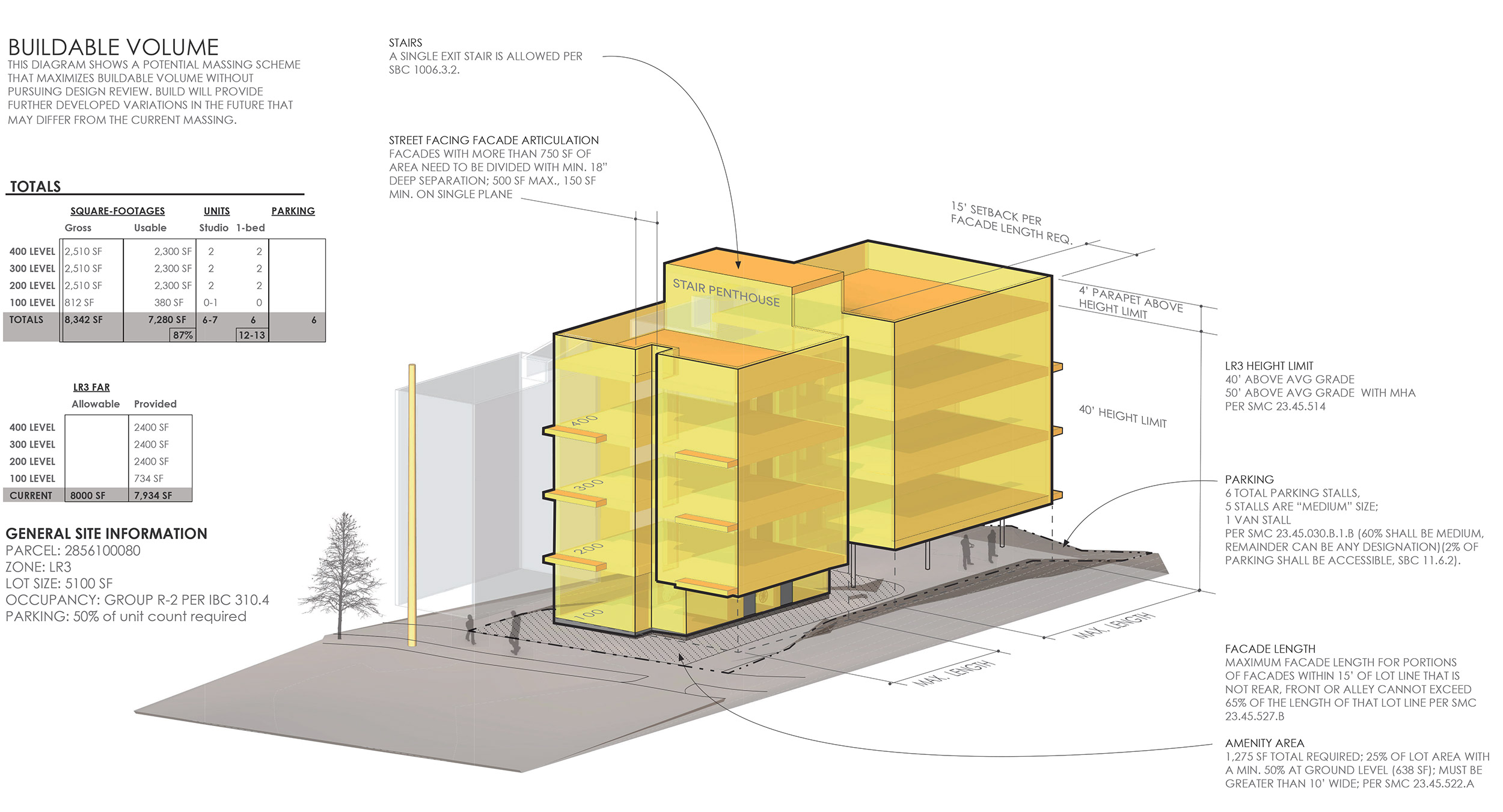
In this case, these six design strategies result in 12 well-designed and highly desirable flats with a strong pro forma; to be sure, a building that accomplishes more than most multi-family projects. We’ll be tracking this project over the years to hone our thinking and design strategies on current and future multi-family and mixed-use projects on our desks.
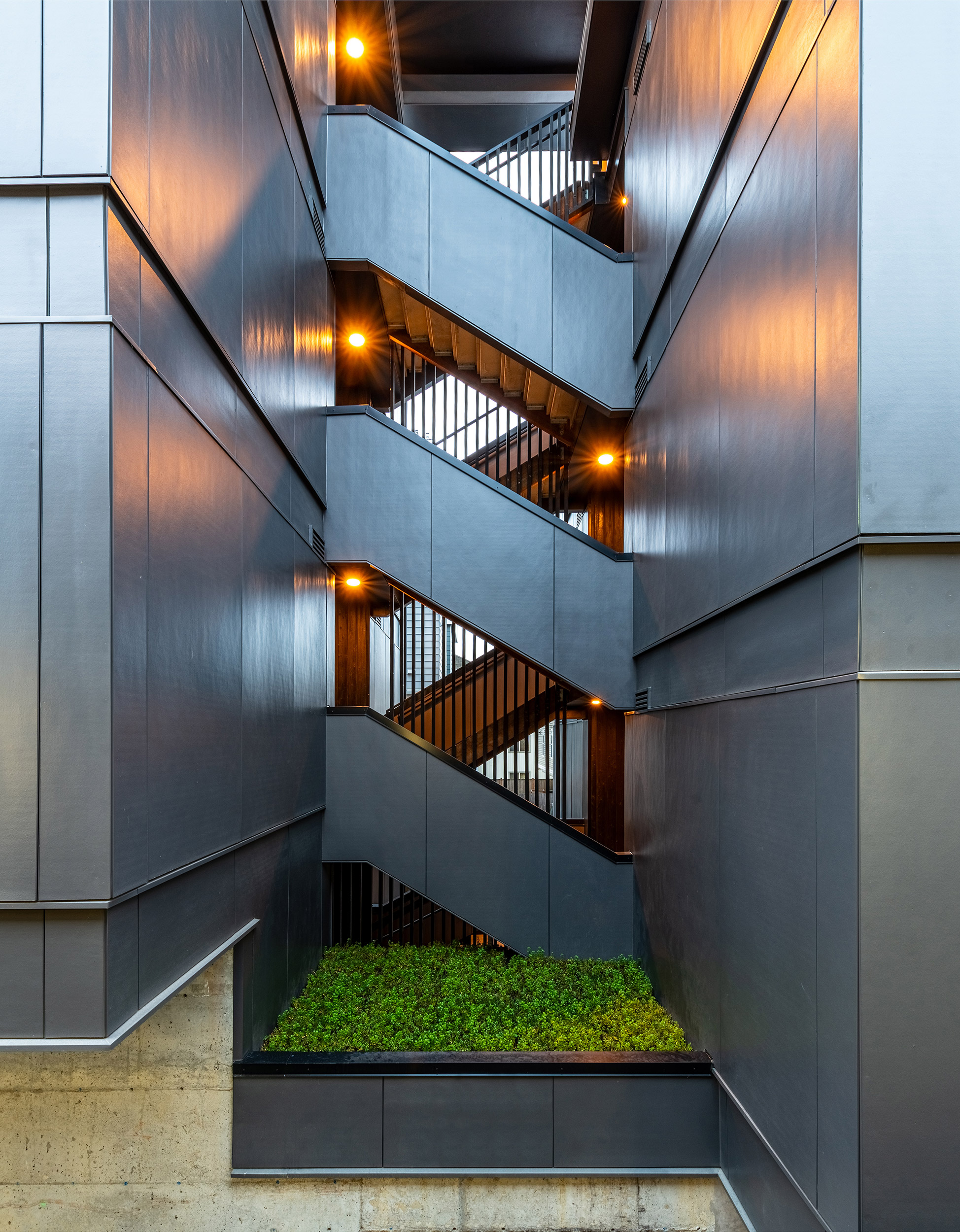
Stay tuned and cheers from team BUILD
